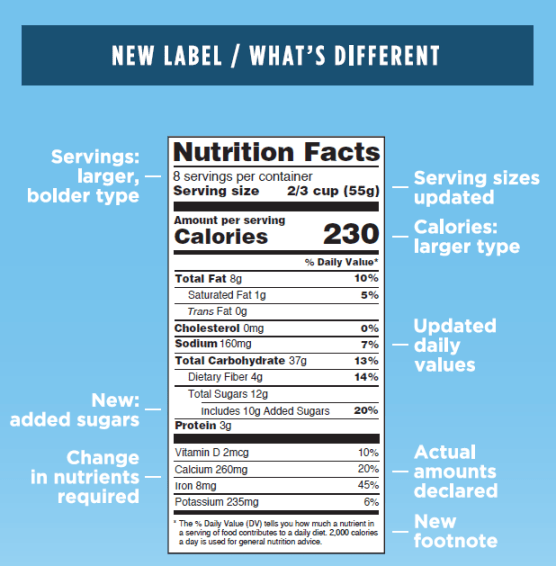The updated label marks the first major change to the nutrient labelling system in the US since the 1990s

The updated food labelling system reflects new scientific information, such as the link between diet and chronic diseases (Credit: Pixabay)
The Food and Drug Administration’s (FDA) new Nutrition Facts label has come into force for major packaged food manufacturers across the US.
This change, applied to businesses that earn $10m or more in annual sales, is designed to make it easier for consumers to make better-informed food purchasing choices.
Information on the new labelling system reflects changes in scientific thinking since it was last updated — including links between diet and chronic diseases such as obesity and heart disease.
Manufacturers that record annual food sales of less than $10m have until January 2021 to comply with the new regulations, while producers of single-ingredient sugars, such as honey, need to implement the system by July 2021.

FDA director of the office of nutrition and food labelling Claudine Kavanaugh said: “The new Nutrition Facts label has updated serving sizes for many foods.
“We know that Americans are eating differently, and the amount of calories and nutrients on the label is required to reflect what people actually eat and drink — not a recommendation of what to eat or drink.
“The new label, including this dual-column layout, will drive consumers’ attention to the calories and percent daily value of nutrients that they are actually consuming.”
From added sugars to a larger calorie typeface: What’s new with the FDA Nutrition Facts label?
A driving factor behind the FDA’s change is the previous label being more than 20 years old.
The Nutrition Labeling and Education Act was first signed into law by President George H. W. Bush in 1990, and gave the FDA authority to require nutrition labelling for most foods it regulated.
Although some minor changes have been made to the system, such as a requirement to include how many grams of trans fatty acid — a type of unsaturated fat that occurs in small amounts in meat and milk — are in one serving of a product, the Nutrition Facts label has remained mostly unchanged.

The new regulations have seen a redesign of the label, with the new guidelines requiring two side-by-side columns — with nutritional information for a single serving alongside measurements for the entire package.
Information surrounding added sugars has been also been included, as these can make it difficult for someone to meet their nutrient needs.
Alongside this, the size of the text which informs consumers how many calories are in a food item has grown, with the serving size typeface also becoming bolder.
